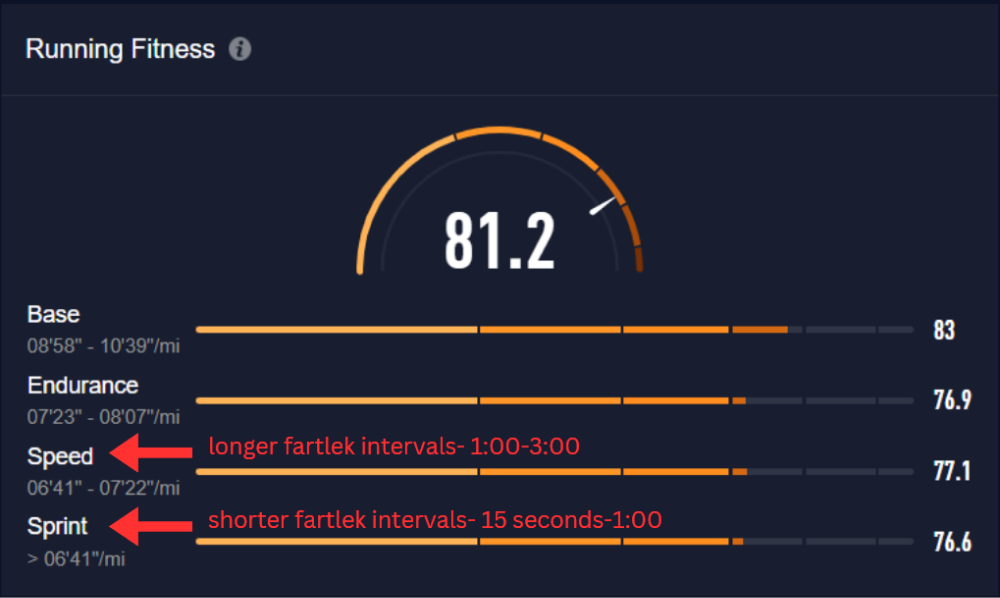As the off-season begins, runners eagerly look forward to a break from structured training routines. Whether you're a seasoned runner looking to maintain your fitness or you're making a return to running after recovering from an injury, incorporating speed play can add some fun and spontaneity to your off-season training.
COROS Coaches look at the different types of speed play workouts and how to incorporate them into your training routine, setting you up for a stronger and faster upcoming season.
What is Speed Play?
Fartlek, which means "speed play" in Swedish, is a type of interval training that involves varying your running pace and intensity during a single run.
You can incorporate fartleks into any type of run, whether it's a long, easy, or tempo run. This can help make your workouts more engaging and enjoyable and even help prevent burnout.
Whether you're a beginner or an experienced runner, intervals can be adjusted to help you achieve your specific goals, whether it's improving speed, endurance, or overall running performance.
Types of Speed Play Workouts
Here are some different types of speed play workouts that you can incorporate into your training:
- Classic Fartlek: unstructured workout where you randomly select points along your running route and change your pace
- Pyramid Intervals: gradually increase and then decrease the intensity of your intervals. This will create a pyramid-shaped intensity profile for your workout.
- Hill Intervals: incorporate hill sprints to improve speed and running form then recover on the downhill or flat sections
- Time-Based Intervals: similar to the classic fartlek but you will run based on time intervals. For example, run at a faster pace for 2 minutes, followed by running at a recovery pace for 2 minutes and repeating throughout your run
- Goal Pace Intervals: incorporate intervals at your goal race pace to mimic what your pace will be on race day

Fartlek workouts are great for both road and trail runners.
These types of workouts will follow a similar structure:
- Warm-up: includes the dynamic warm-up and at least a 10-15 minute easy run
- Speed Play: this can be a set pace or an all-out sprint
- Recovery: run at your easy or recovery pace before increasing the pace again
- Repeat: you can repeat the speed intervals as many times as you want or for a predetermined distance or time
- Cool Down: 10-15 minute easy run allowing your heart rate to lower, followed by a few static stretches

Example of a Time-Based Fartlek Workout from an athlete's training hub.
What are the Training Benefits?
Speed play is beneficial for runners of all fitness levels:
- Beginners should start with shorter, less intense intervals to gradually build endurance.
- Experienced runners can challenge themselves with a variety of interval lengths and faster paces to continue pushing their limits and enhancing their performance.
The duration of recovery periods in interval workouts can vary depending on your fitness level and the intensity of faster intervals. If you are new to speed play training, consider longer recovery periods lasting between 1-2 minutes. For more experienced runners, use shorter recovery periods to increase the challenge and intensity of the workout with recovery periods being as short as 30 seconds to 1 minute. If you still feel fatigued or out of breath, take a longer recovery.
Incorporating speed play into your training will help to improve your Running Fitness. This refers to the way to assess your running abilities to help better understand your strengths and areas for improvement as a runner. Because speed play workouts typically consist of shorter intervals, these workouts are particularly effective for improving your Speed and Sprint categories.

Running Fitness metrics from an athlete's Training Hub.
The paces associated with each category are the intensities at which you should run to improve this given category. After identifying your areas of improvement, aim to increase your training time within this pace zone to improve more effectively.

/filters:quality(90)/fit-in/970x750/coros-web-faq/upload/images/d6d237afe4290895821afed190c45a05.png)





